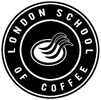Understanding over, under and ideal extraction
Extraction is one of the most important aspects to creating the perfect cup, but still under research in the world of coffee. Without extraction, we would not have the morning cup of coffee that we all know and love, we would end up with a cup of water, with ground beans floating around it.
This article focuses on the parameters that make a good or bad extraction and how to easily identify them from a sensory standpoint.
The release of flavours is a rather complex process that occurs as water dissolves different compounds according to their molecular and chemical structure. The lighter compounds are extracted first because they need less time and energy, than heavier compounds which are extracted later. This progression of flavours is, fortunately, repeatable and above all, very obvious to our palates.
In each coffee bean, and consequently, in any mass of ground coffee, the soluble part makes up around 30%. That is to say that only 30% of the bean provides flavour and can be infused or diluted.
The remaining 70% is constituted by minerals, cellulose, oils and other chemical compounds that do not contribute to the flavour but to the sensation of body and viscosity of the coffee.
The coffee industry has some parameters to quantify the percentage of extraction (discussed below), and it has been agreed by most of the industry that the ideal extraction percentage is between 18% - 22%. This percentage refers to the amount of the compounds in the coffee that have been extracted into the water.
Any extraction of less than 18% is classified as under extraction, and any extraction above 22% is labelled as over extraction.
Under Extraction
This is difficult to quantify without the needed equipment at hand, but in terms of flavour, we speak of under extraction when we have not removed enough flavour from the beans, particularly the material that could give it balance and more sweetness. The drink presents sour and herbal flavours, low sweetness, maybe a little salty (particularly in espresso) and a very short aftertaste. These are the most obvious indicators of under extraction.
It is important to clarify that the compounds responsible for these undesirable flavors also exist in a balanced flavoured beverage. Only that the compounds that give balance are extracted later and mask the undesirable flavours.
A common confusion when describing flavours is presented between the concepts of “sour and acid”. These are two different things, although many people interpret them equally and in many languages, they are practically the same.
In coffee, we speak of “sour” as something undesirable. A very intense acidity that creates an immediate physiological reaction as when we eat very acidic lemons.
Acidity, although it can also be good or bad, is more a category of flavours. We all talk about a coffee “with a juicy acidity”, “an acidity like green apple” or we speak of “a sharp and sour acidity”.
If you’re brewing at home, for work behind the cafe bar or cupping coffee, and you find your coffee tastes as described above, it’s probably under extracted. We recommend for your next brew, try a finer grind, a longer brew time or use a higher temperature of water. Change one variable at a time, then see what effect that has on your final brew.
Over Extraction
Contrary to the under extraction, in the over extraction we remove more than we would like from the soluble material that it also results in undesirable and unfavourable flavours.
The main characteristics are an intense bitterness and astringency or dry mouth. To understand the meaning of “bitter” we may refer to products such as tonic water, pure caffeine or Campari.
Caffeine is understood to be one of the main causes of bitterness in coffee, but other chemical compounds within the coffee bean that contribute to this flavour, such as other acids (i.e Chlorogenic) and carbohydrates. The distillation and degradation of sugars, thanks to darker roast profiles, also generate bitter flavours.
The astringency or dryness in coffee is generally something bad and undesirable. To understand this sensation, we can refer to unsweetened black tea, causing the inside of the mouth to dry out, and feel like sandpaper.
If you’re getting any of these flavours in your brew at home, it could mean that your coffee is over extracted. Next time you make a brew, try to make your grind size coarser, shorten your brew time or use a lower temperature of water. Make sure to change one thing at a time, and see what effect it has on your drink.
Ideal Extraction
A well prepared coffee, and according to the parameters established by the coffee industry between 18% and 22% should be sweet, creamy, with a good definition of its fruity attributes and flavours. The residual taste or aftertaste is also a good indicator of good preparation if it is long and pleasant.
Above all, a well-prepared coffee is a coffee with a balance between its main attributes, such as aroma, acidity, sweetness, weight in the mouth and residual.
Finishing Notes

Something to remember is that each coffee is different, and you shouldn’t be surprised if you get a good tasting coffee that falls outside of the 18-22% extraction perimeters. The industry has set this as a helpful guideline, giving a good reference point when starting a brewing recipe, the aim is to get the highest % extraction at which the coffee still tastes great.

Want to learn more?
Step up your coffee brewing skills for work or for home by enrolling onto one of our Online SCA Brewing Foundation Courses! AST Emma Haines will be sharing all her tips and tricks for the perfect cup.
So that you can learn from home, we will be posting all the equipment needed to complete the practical side. This will include a selection of tasty coffees, plus a V60 for you to keep at the end of the Course
https://londonschoolofcoffee.com/collections/online-courses/products/sca-brewing-foundation-online
Happy brewing!


